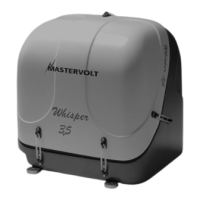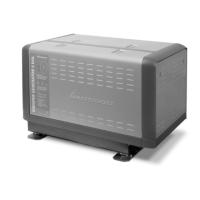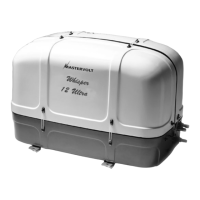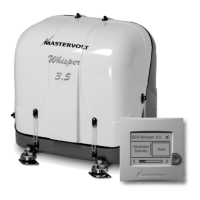INTRODUCTION
EN/ Whisper 6 / 10 - 3000RPM for mobile applications / August 2009 / Copyright © 2009 Mastervolt / Août 2009 5
Figure 2: Typical vehicle application radiator top mounted
Figure 3:
Typical vehicle application radiator bottom mounted
1.2.2 Why two radiators:
The optimum engine operating temperature is between
87° and 92° Celsius. The radiator reduces the temperature
of the cooling liquid by only 5°C to 12°C. The returning
“cold” coolant therefore has a minimum temperature of
approx. 75° Celsius.
The alternator should be kept as cool as possible. In
practice an alternator starts getting less efficient above 40°
Celsius. It is hardly possible to cool down the coolant of
the alternator below 40° by using a radiator. When a
vehicle is in the sun on a parking place the ambient
temperature itself could be 40° Celsius.
Because of the divergence in the working temperature of
engine and alternator it will be clear that it is not possible
to combine the cooling of the engine and alternator in one
radiator system.
Furthermore it will be clear that it is very difficult to cool an
alternator optimally with the aid of a radiator in conditions
with high ambient temperatures.
1.2.3 Why the alternator should be cooled by
water
For normal industrial use alternators are cooled by air.
This requires a flow of air through the alternator of many
m3 per minute. With the air, the noise comes out into the
open. Generators on vehicles can only made silent by full
enclosure in a sound shield canopy. The only opening in
the Whisper canopy is the inlet for combustion air. For that
reason the alternator is cooled by water. Although cooling
the alternator by circulating water through a radiator is not
ideal; it is much better than by air. Therefore aircooled
alternators are rarely used in vehicles

